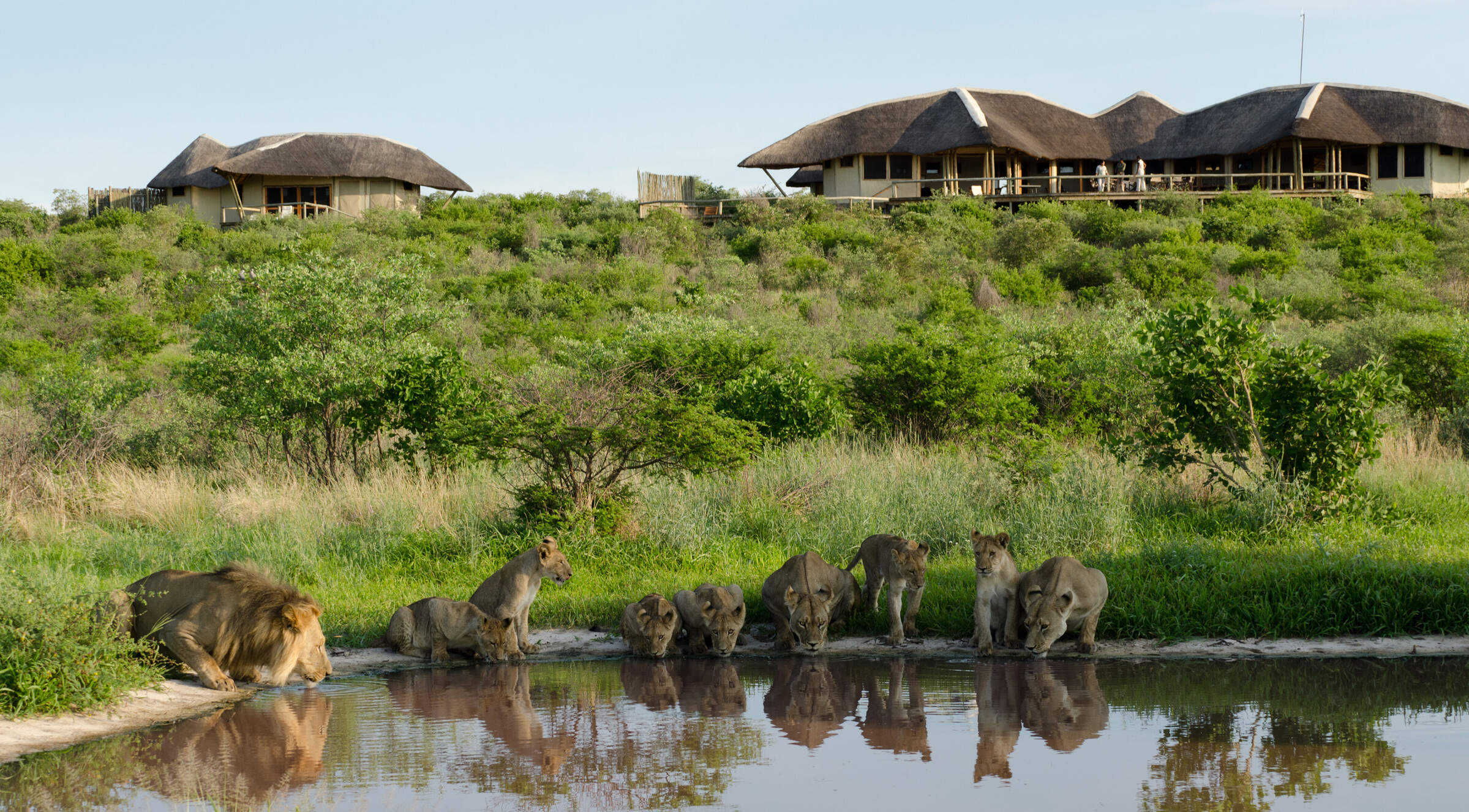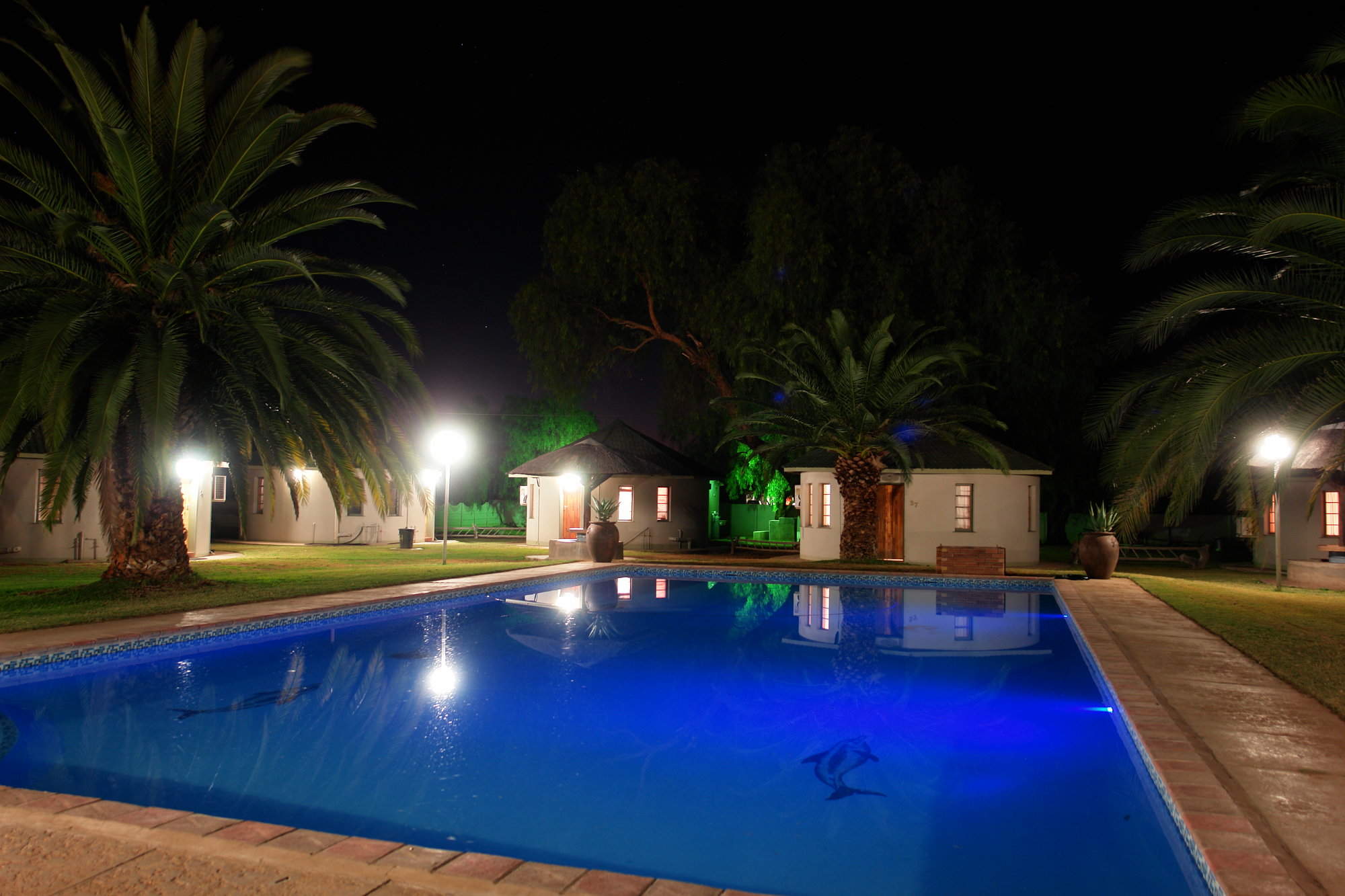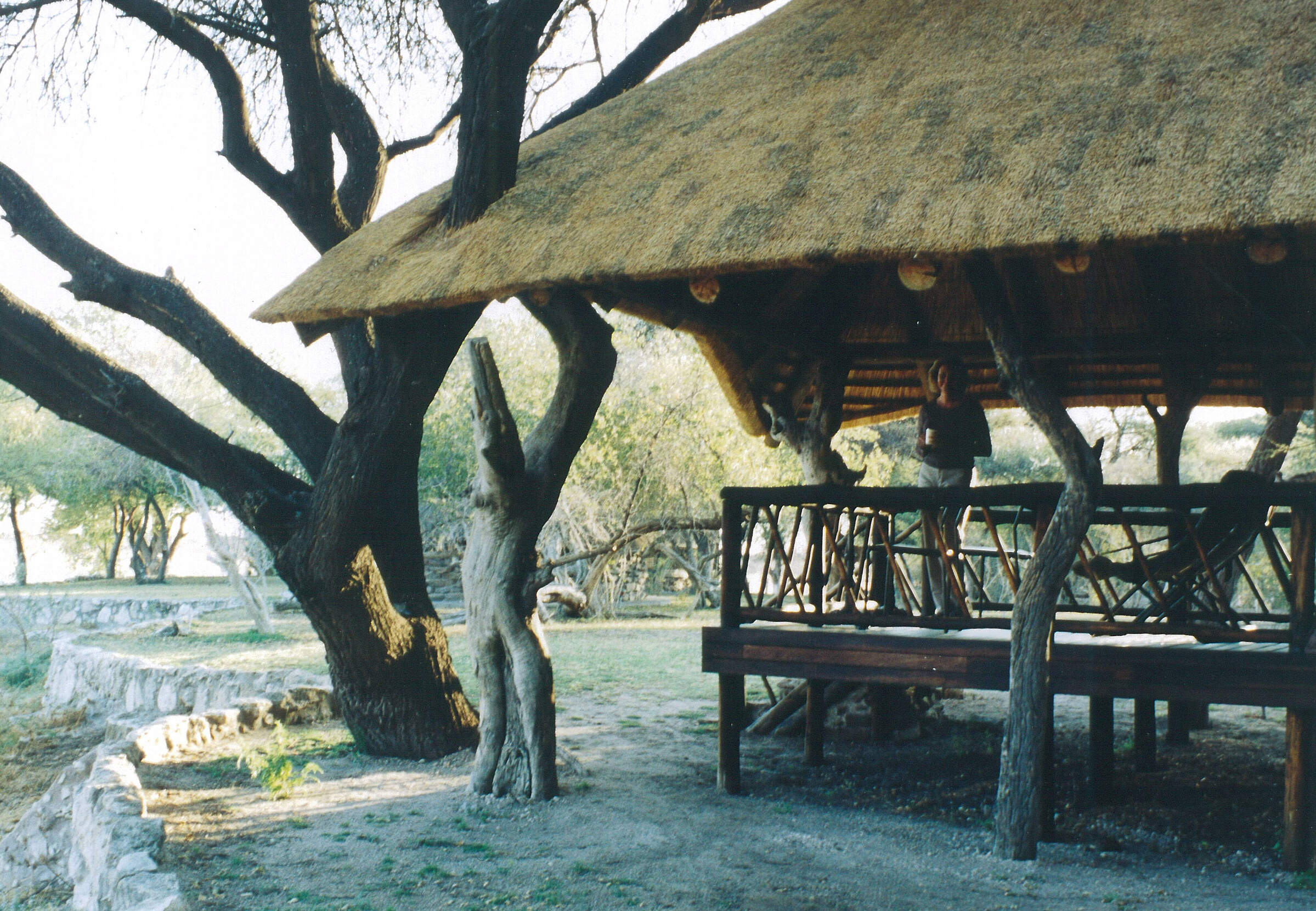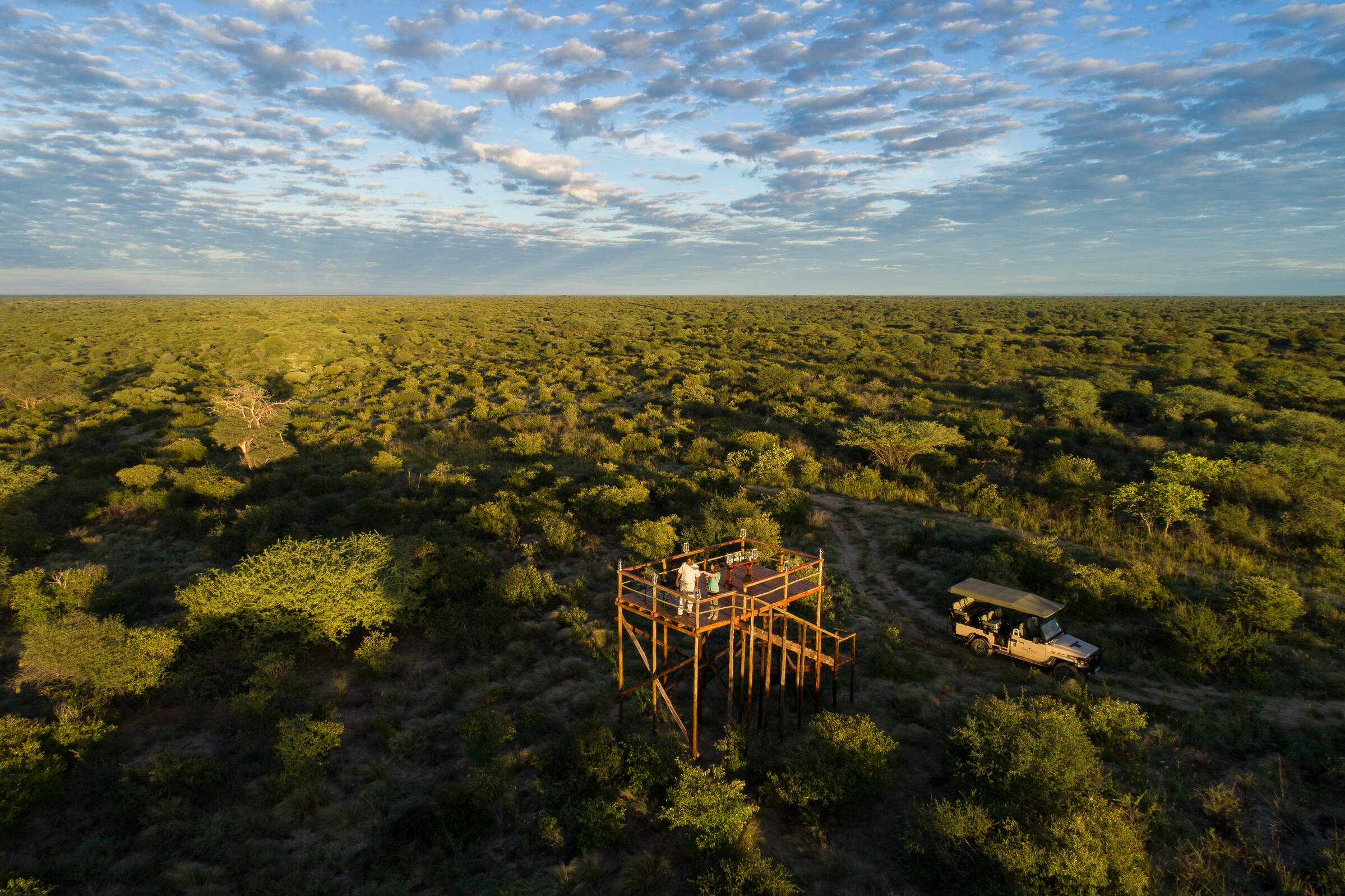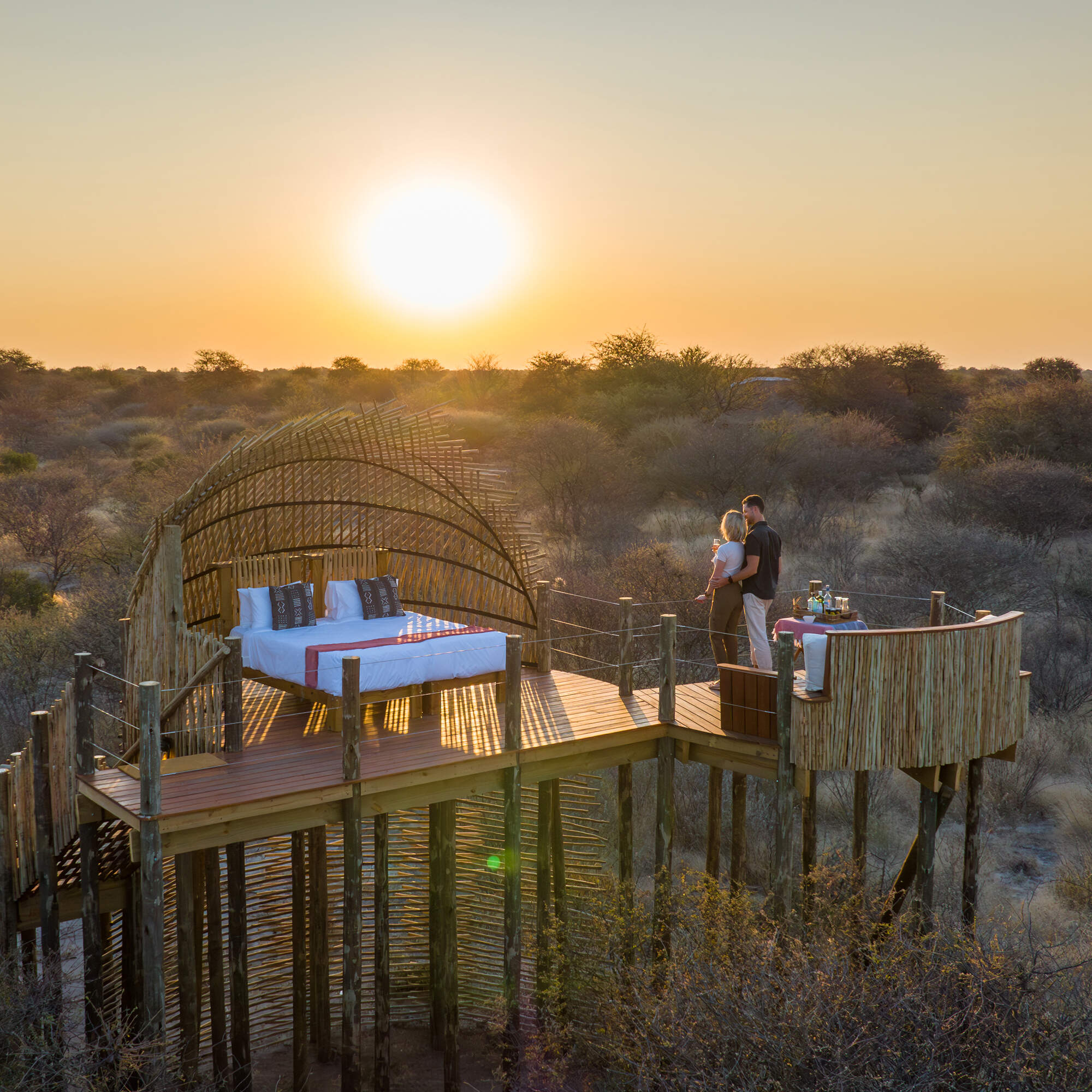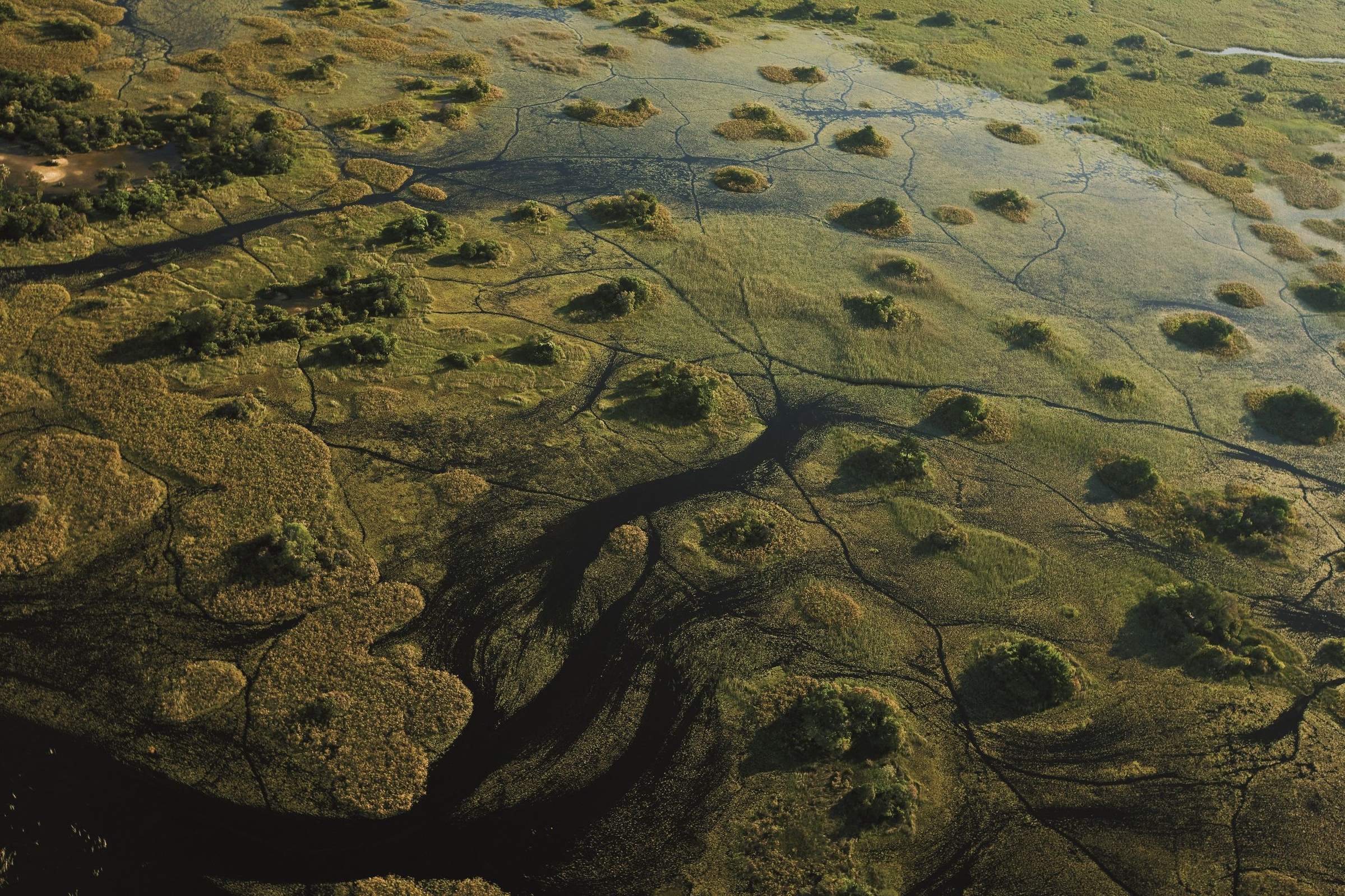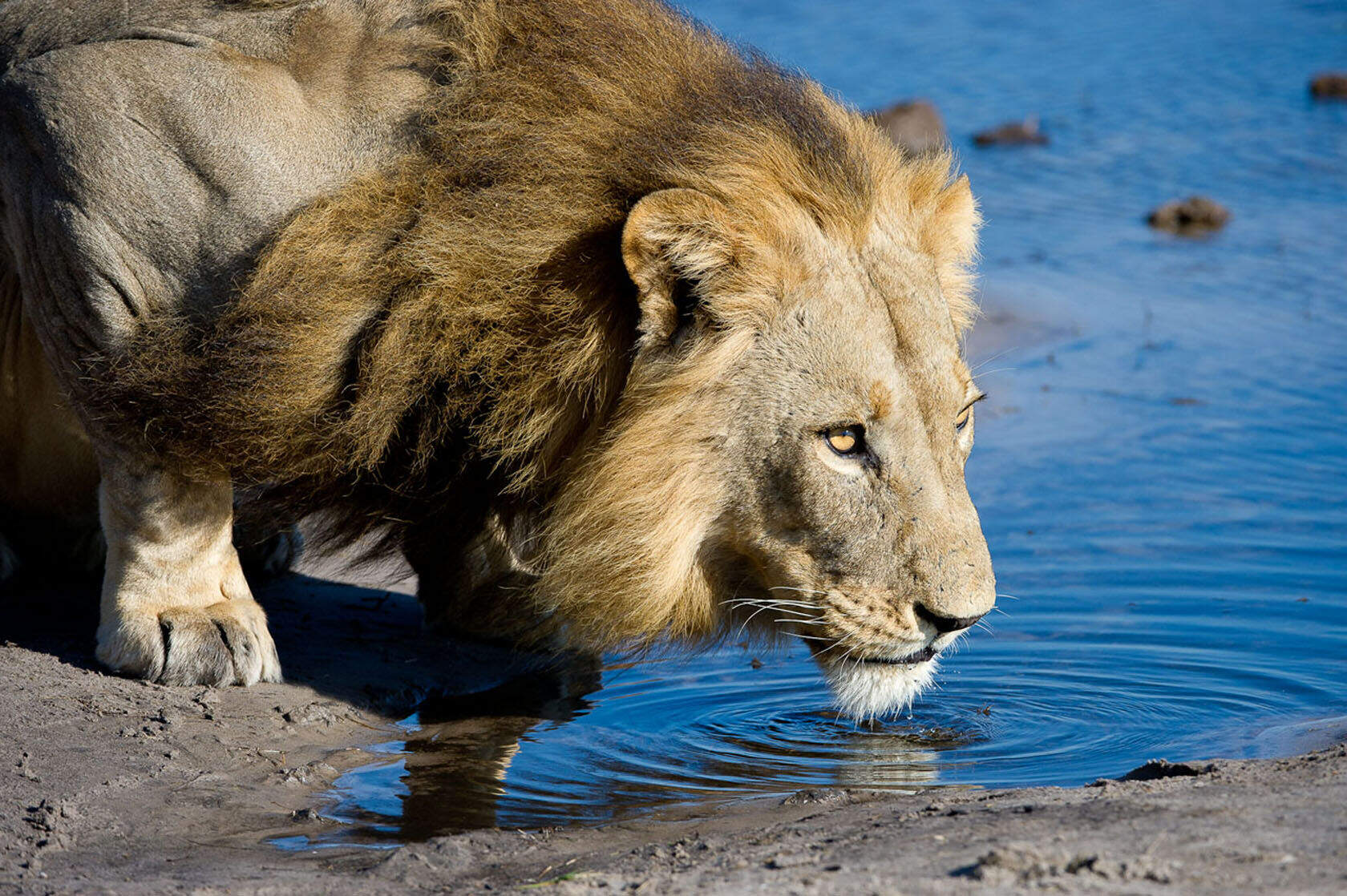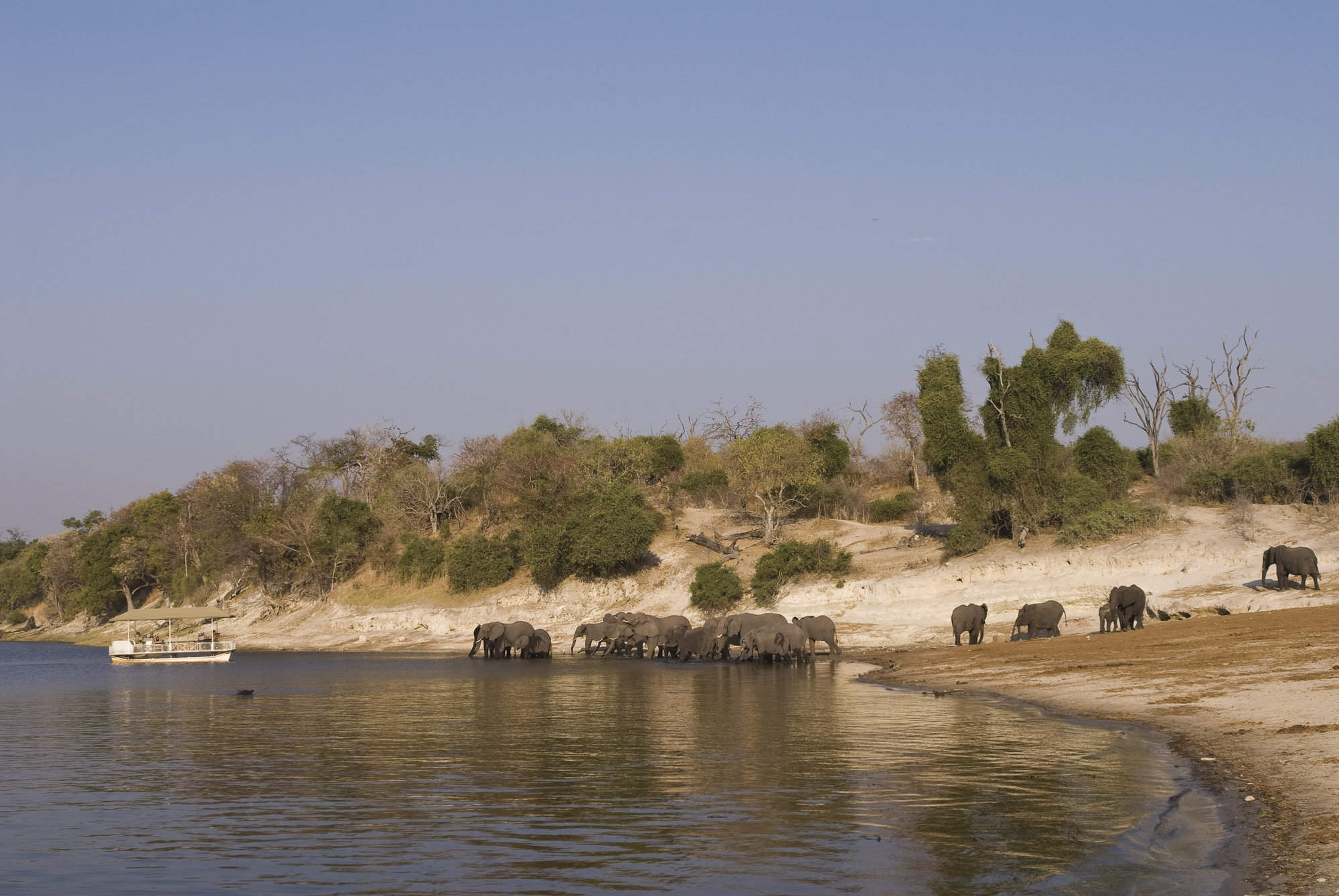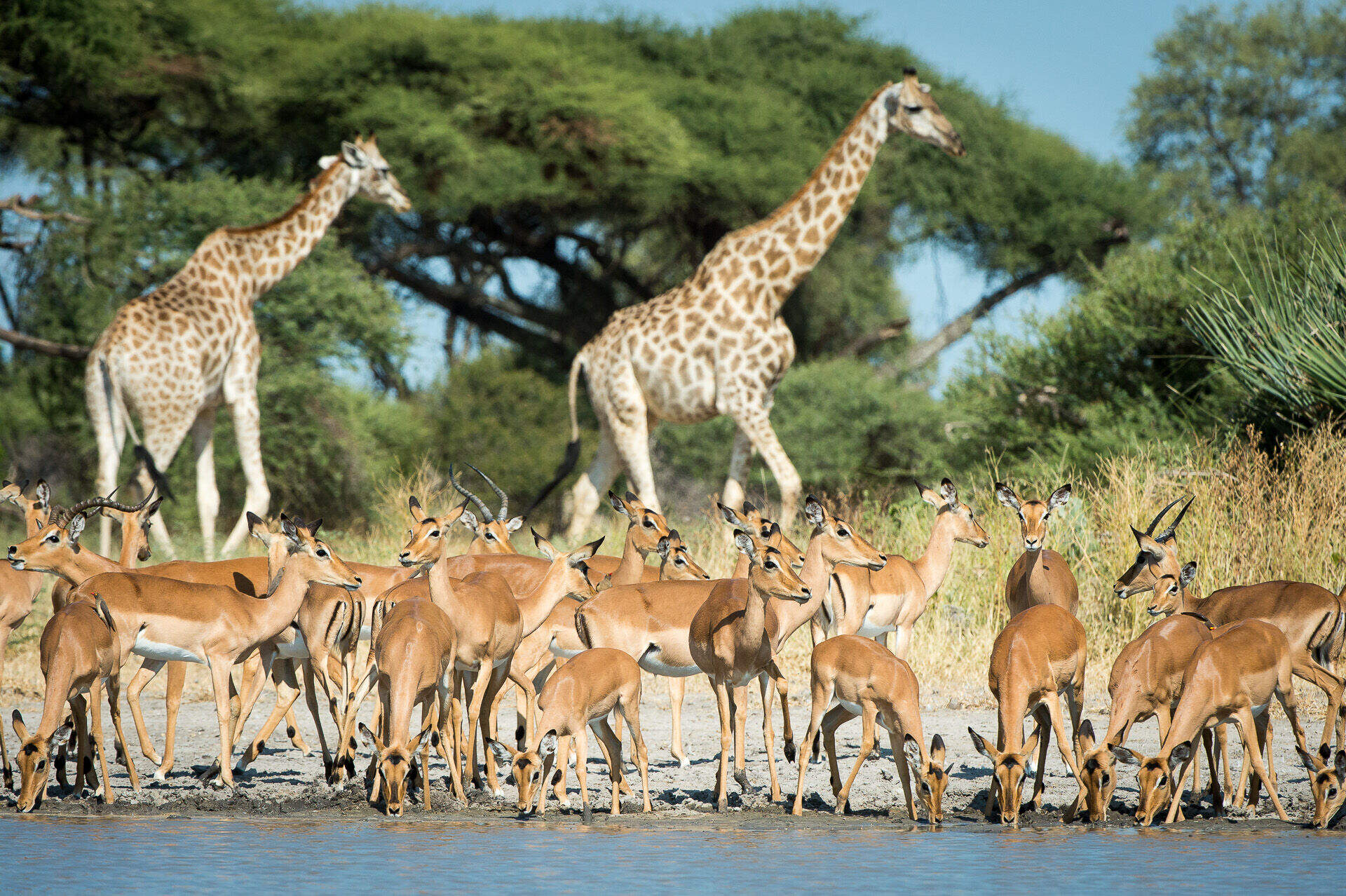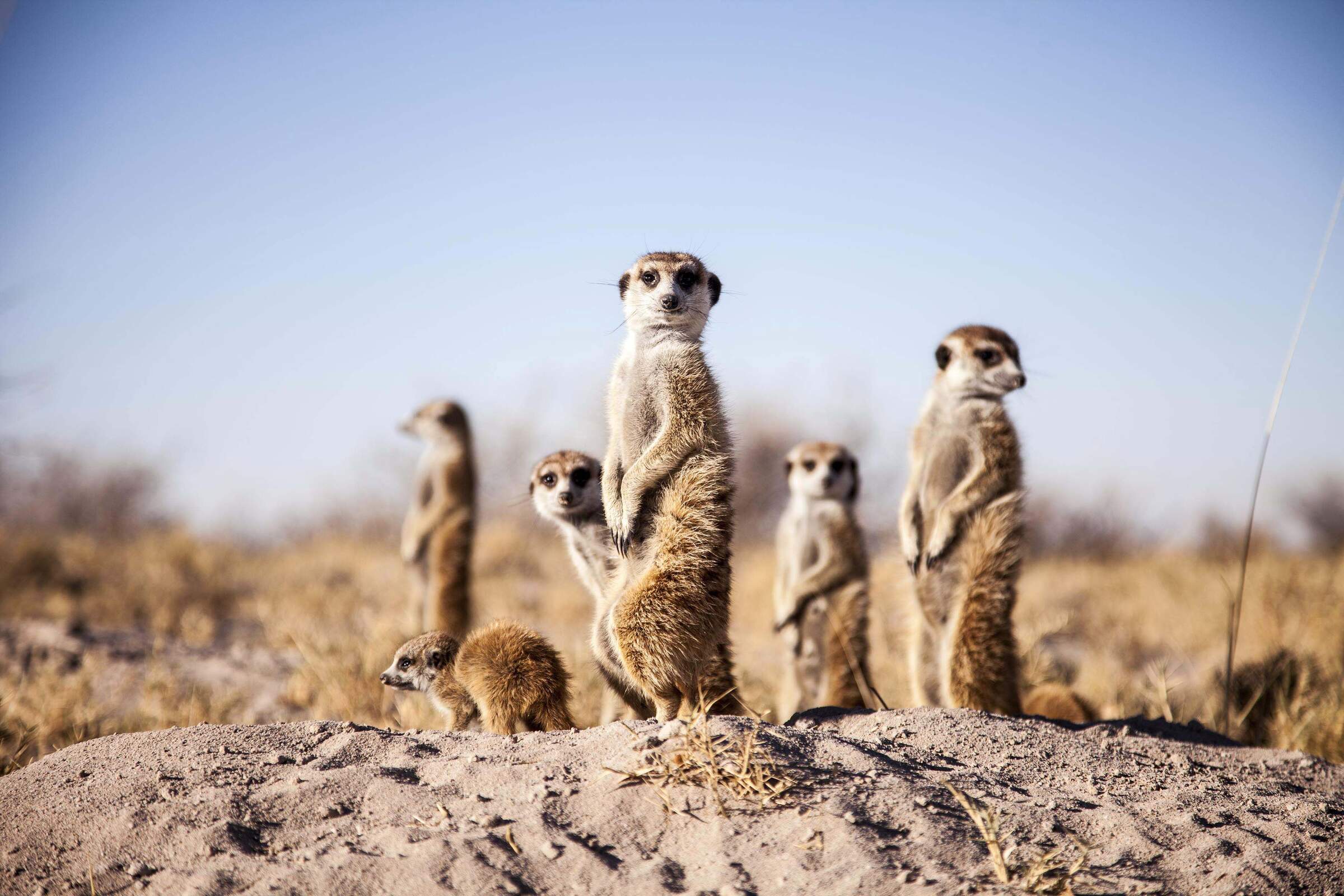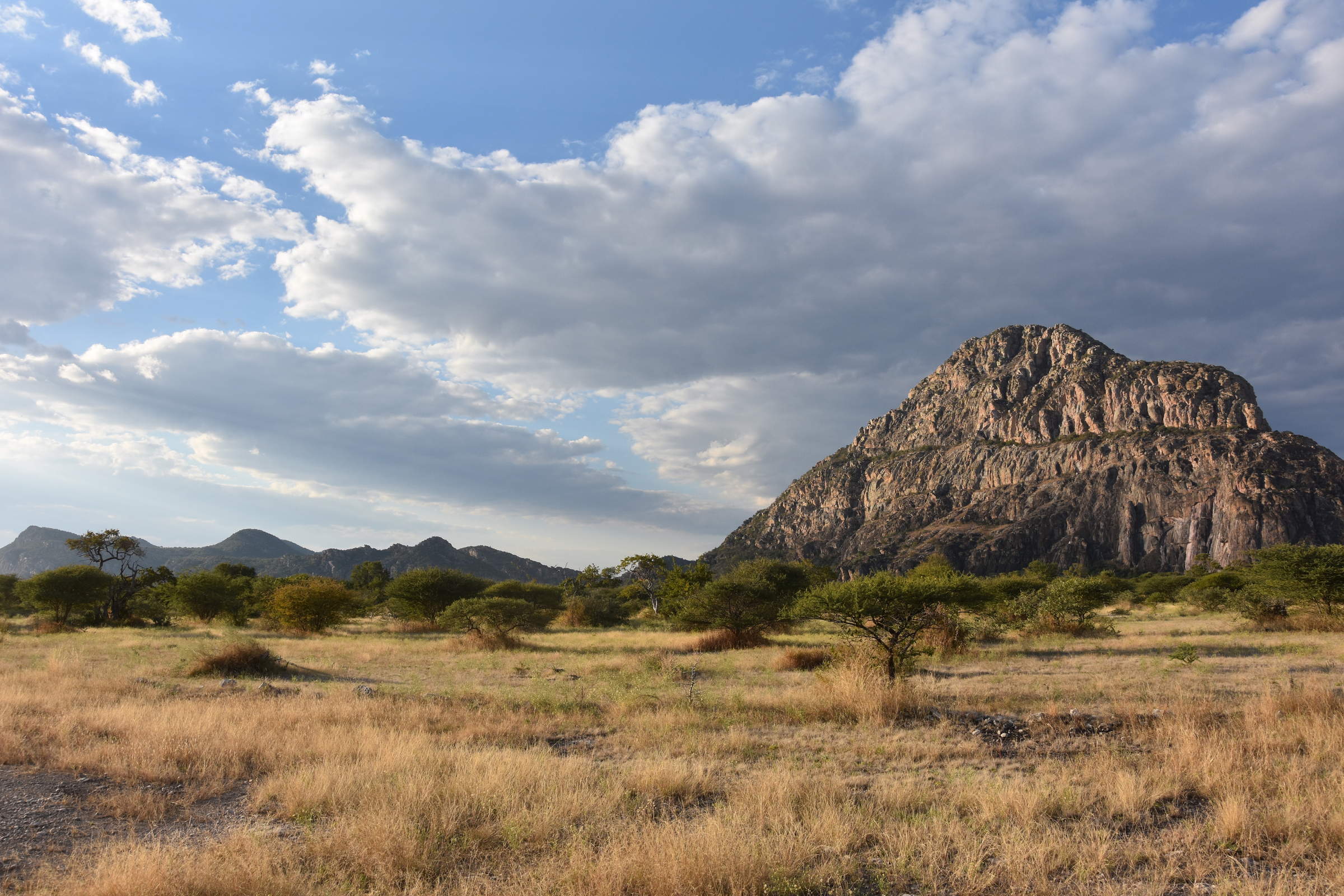Kalahari Plains Camp: Our full report
Kalahari Plains Camp sits on the edge of an enormous pan, south-east of Deception Valley in the Central Kalahari ...
... Game Reserve (also known as the CKGR), which offers some of Botswana's best summer game viewing. It is one of just two camps in a reserve approximately the size of Switzerland, and the views from across the pan are immense. The camp was moved here from its original location in 2009, taking it away from the more accessible public roads in the reserve.Kalahari Plains is located well away from the more accessible public roads in the reserve, on the edge of the aptly named Big Pan, and affords great views across this vast (often sparsely vegetated) expanse. There is a waterhole a fair distance away, but with the help of the viewing scope in the main area, you can take a closer look at its visitors.
The main area of Kalahari Plains Camp is a thatched, wooden building, built on a raised deck and open on three sides to allow the air to flow freely. At one end is the dining area, with views out to the separate pool deck and the pan. The small saltwater pool here offers welcome relief from the Kalahari heat, and the shaded deck with comfortable sunloungers some respite from the sun. This deck also leads to a guest toilet with the most fantastic views over Big Pan – so worth trying at least once!
A large proportion of the main area is taken up by an inviting lounge area, an eclectic gathering of comfortable chairs, tea- and coffee-making facilities with freshly baked biscuits in a jar, and a small reference library. At the heart of the building, the bar is the venue for pre-dinner drinks, and when we last visited in June 2017 we had a drink here before dinner. The curio shop is well stocked and we liked the fact that they sell a good selection of locally made items. There is a stargazing deck on the roof above the bar, and an open campfire area in front where dinner is usually served if the weather allows. Unlike most camps in Botswana the fire is not lit every night due to the scarcity of wood here.
Accommodation at Kalahari Plains Camp is in ten tented chalets, linked to the main area by sandy pathways. These chalets are of a good size, built on wooden decks raised off the ground to keep them cool in the very hot summer months. The innovative insulated canvas walls and roof of each chalet, together with a ceiling fan and large mesh windows, also help to keep the interior relatively cool. We loved the airy feel that these large windows give to the chalets, but were pleased to see roll-down canvas and clear plastic blinds in case of inclement weather.
The chalets are decorated in neutral tones and simply, but comfortably, furnished, with lots of wood, soft suede and leather. The beds, which can be made up as twins or a double, face out towards the veranda with fantastic views of the plains. You'll also find a writing desk with a lamp, universal plug points for charging camera batteries, and a tasteful wooden tray featuring tea and coffee, a flask of hot water (which is topped up with boiling water every morning and evening), mugs, glasses and a jug of iced water. A comfortable armchair looks through the enormous mesh window, while outside on the deck are deckchairs and a table.
A door to one side of the chalet leads to the en-suite bathroom, complete with a flushing toilet, twin handbasins with copper taps, a full-length mirror and walk-in shower. You'll also find plenty of wooden shelves and hanging space for clothes, extra blankets for the very chilly winter nights, a digital safe, insect repellent and environment-friendly shower gel, shampoo and conditioner. Another thoughtful touch in the hot summer months is the provision of a sarong. Take it with you on a game drive and your guide will wet it in cold water for you to drape over your shoulders to keep cool. 'Kalahari air-conditioning' at its best!
One of the coolest features of each chalet at Kalahari Plains – and a real highlight for us on our last visit – is the sleep-out deck, accessed up wooden steps from the bottom deck. Your bed can be made up here for you to sleep under the stars, but if you get a little nervous, or chilly during the night, you can quite easily pop back downstairs into the comfort of your bed inside. We loved lying tucked up and cosy, gazing up at the star-filled sky (and desperate to see just one shooting star!): all the best bits of camping, but a lot more comfortable and without the associated work!
Two of the tented chalets have a second en-suite bedroom sleeping up to two children, so are ideal for families, or friends travelling together. The main bedroom offers exactly the same facilities as the standard chalets, whereas the second bedroom, while en suite, doesn't have a veranda or the sleep-out deck. It's important to note is that there is no inter-leading door between the two tents; to access one from the other you have to go outside and walk across your deck.
Guided morning and afternoon game drives in open 4WD vehicles are the mainstay of activities at Kalahari Plains Camp, but what you see will depend largely on the season, and the timing of the rains. For much of the year the Central Kalahari Game Reserve is a dry, unrelenting landscape dotted with a relatively low density of wildlife, which includes springbok, gemsbok (or oryx), black-backed jackals, bat-eared foxes and, occasionally, wild dog, cheetah and lion. Between May and October, when the Okavango Delta is awash with the annual flood waters, the contrast is quite stark. It's the perfect time to see first-hand just how well these animals have adapted to survive in these harsh conditions.
However, during the summer months, from November through to April in times of good rainfall (with December, January and February being the best), the valleys and pans of the CKGR turn green with nutritious grasses. Antelope, blue wildebeest and giraffe arrive to feed on these sweet grasses and they can attract predators to the area, including cheetah, Kalahari black-maned lion and black-backed jackals. This is when the Central Kalahari offers its best game viewing.
Full-day trips to Deception Valley or further afield can be arranged on request, though as Kalahari Plains is within the national park, no off-road driving or night drives are allowed. This can be particularly frustrating when the animals you've spotted are in the far distance, so remember to bring along a good pair of binoculars.
Back at base, Kalahari Plains also offers an educational walk in the immediate vicinity of the camp, led by a local multi-generational San Bushman family. Previously, the walks were led by a member of the staff dressed in traditional Bushman attire who may or may not have been a direct descendant, but fortunately the San family members leading the walks now are full-time employees at Kalahari Plains Camp who alternate with another San family from the same village. They speak in their own Khoisan language using clicks, and a Setswana-speaking staff member assists with translation. During the walk, the Bushmen demonstrate how traps are set for catching small birds and antelopes. They also highlight the traditional medicinal purposes of local plants, and demonstrate how the age-old way to make a fire. It is worth mentioning that the Bushmen wear their traditional garments only during the walk; during the rest of their time in camp, they wear the standard staff uniform.
Kalahari Plains operates in constantly challenging conditions, on a previous visit we found their unusual 'behind the scenes' tour especially interesting. We were proudly shown the impressive state-of-the-art solar system, which runs off 72 solar panels and provides all the electricity and hot water in camp. Water is life in this dry environment, and we learned about the water storage and distribution. The water from the borehole is saltier than seawater, so is used for such things as the showers and the pool. Drinking water, which was once trucked in over a distance of 100km, is now produced by a reverse osmosis machine kept at camp, which purifies the water by removing the salt. We particularly enjoyed meeting the people behind the scenes, who keep everything ticking over smoothly.
That said, because 'behind the scenes' areas – like the kitchens and staff village – are relatively close to the chalets, we found that we could often hear snippets of noise from them during our stay.
Our view
Kalahari Plains Camp is well situated close to the CKGR's most famous area, Deception Valley. We loved the big gauze windows in the tented chalets and the sleep-out decks on the roofs. The guiding was good and we felt that the camp offers a relatively unexplored wilderness with the potential for great game sightings between about December and March. However, we'd be less enthusiastic when the park is drier, and the game less visible, between about June and November. On one visit we had great sightings of 2 individual groups of bat eared fox which can be found regularly int his area. We saw plenty of plains game such as springbok and Oryx with the odd black-backed jackal.
STOP PRESS: Sadly Kalahari Plains Camp is now closed and, as yet, there is no date for its re-opening. Please call us for the latest details and alternative options.
Geographics
- Location
- Central Kalahari Game Reserve, Botswana
- Ideal length of stay
- Stay two nights during the largely dry season of April to November and three nights during the Kalahari's most productive season, between about December and March.
- Directions
- Access to Kalahari Plains Camp is usually by air. It is approximately a 1¼
-hour light-aircraft flight from Maun, followed by a 30-minute drive to the camp. Alternatively, the camp can be reached by 4WD on a self-drive itinerary but you still need to pre-book. - Accessible by
- Self-drive or Fly-and-Transfer
Food & drink
- Usual board basis
- Full Board & Activities
- Food quality
- On our last visit to Kalahari Plains Camp in June 2017, we have found the standard of food to be very high.
A light breakfast is served before heading out on activities. This is usually a buffet of cereals, fruit, yoghurts and freshly made muffins and pancakes.
Lunch was served on our arrival, it included breaded hake, mixed salad and coleslaw with pumpkin and lentils.
We are constantly amazed at the wonderful creations the chefs come up with for afternoon tea. Who doesn't enjoy an ice cream on a hot summer's day? Kalahari Plains Camp’s homemade ice cream with chocolate brownies did not disappoint. The mini bite-sized burgers and deep-fried, chiekn wings were very tasty. Guests help themselves to tea, coffee, iced-tea and incredible homemade lemonade, which seemed to fizz in the mouth!
Dinner is, more often than not, taken as a group around one long table but individual tables can be arranged on request – or if there are children in camp. Previously we have enjoyed creative savory canapés of local pap (cooked maize flour) topped with pounded beef ( known locally as ‘seswaa’). During our most recent stay we had beef fillet, ostrich koftas, salad, mange tout and gem squash stuff with quinoa. Desserts are very good, and in the past we have had yummy chocolate mousse with a homemade brandy snap. - Dining style
- Group Meals
- Dining locations
- Indoor and Outdoor Dining
- Further dining info, including room service
- Private dinners can be arranged for special occasions and families with young children.
- Drinks included
- Bottled water, soft drinks, local beers, spirits and red and white wines are included. Premier champagne and premium imported brands will cost extra and must be requested well in advance.
Each guest is given an aluminum water bottle on arrival with cold filtered water from the camp’s reverse osmosis machine, which they are encouraged to top up from the supply in the camp's main area. Each chalet is also provided with glasses and a flask of filtered drinking water. The water from the taps is very salty, and not suitable for drinking.
Special interests
- Family holidays
- Kalahari Plains Camp has an interconnecting family chalet with a single sleep-out deck, so this is a good option for a family safari in Botswana. Furthermore, the complimentary ‘Bush Buddy’ programme aims to entertain and educate children.
- See ideas for Family holidays in Botswana
- Cultural experiences
- As a result of Kalahari Plains’ partnership with local San Bushman, we strongly recommend the camp for traditional cultural experiences in Botswana. Guests gain a glimpse of how this fascinating culture has survived for centuries in harsh conditions.
- See ideas for Cultural experiences in Botswana
Children
- Attitude towards children
- Children over the age of 12 are welcome at Kalahari Plains Camp. The camp may accept children aged 6–12 if a private vehicle is booked but this must be requested in advance. Children of six years and under are not accepted.
- Property’s age restrictions
- Minimum age six years
- Special activities & services
- Kalahari Plains Camp has a complimentary 'Bush Buddy' programme that offers families with children a dedicated member of staff for the duration of their stay. This must be requested and pre-booked prior to arrival. There is a wide range of entertaining and educational activities, tailor-made to suit the children's ages and interests. Activities include arts and crafts, short nature walks around the camp, tracking lessons, bird and animal call identification, treasure hunts, baking biscuits and cooking lessons in the bush, for example pizza-making in termite mounds, dancing and drumming, star-gazing and storytelling. Children can also participate in the 'behind the scenes tours' learning about how the camp functions. For older children, the Bushman walks give an informative and entertaining recital of their traditions and culture. Children are also given a safari bag with age-appropriate gifts.
- Equipment
- There is one interconnecting two-bedroom family unit at Kalahari Plains Camp. The camp can arrange separate mealtimes and menus for families with children.
- Generally recommended for children
- The 'Bush Buddy' programme is a wonderful addition for families with children, and we have witnessed this first hand. When one child in a family didn't want to go on a game drive, they remained in camp with their Bush Buddy to play football, paint paper plates, make grass bracelets and catch insects in a bug viewer. Do bear in mind that in summer, because of the heat, the activities start very early – around 5.00am – and tend to be shorter than at Delta camps, returning to camp at around 9.00am, so there are long periods of free time during the middle of the day.
- Notes
- The camp is unfenced and dangerous wildlife can wander through the camp at any time. There is no fence around the pool. There is a small gate at the top of the stairs to the 'star-bed' deck but there is no lock and there is nothing to stop children climbing the stairs. Children need to be closely supervised by their parents/guardians at all times.
Communications
- Power supply notes
- Kalahari Plains Camp has a 40kVA (kilovolt-amps) back-up generator. Batteries can be charged in the chalets, which have power at all times.
- Communications
- Kalahari Plains Camp is in radio contact with the guides whilst on activities and with the main office in Maun. There is a satellite phone available for emergencies, but no internet or cellphone access.
- Water supply
- Borehole
- Water supply notes
- All the tented chalets have plumbed hot and cold running water for showers, basins and flushing toilets. The well is located 1.5km from camp, and a generator pumps water into the reverse osmosis machine.
Sustainability
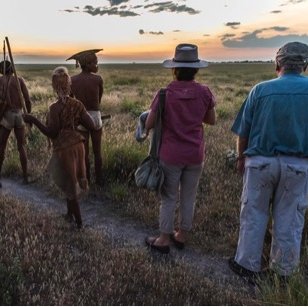
Exploring the Kalahari desert with ‘baSarwa’
Honouring the local culture has become a priority at Kalahari Plains Camp. Encouraged by the cultural heritage deeply entrenched in the sands of the Kalahari desert, the camp offers guests the chance to take bush walks led by local staff who share their knowledge about the intricacies of living in a harsh environment.
Often described as a sensory delight, the ‘Bushman Walk’ highlights a distinctly unique culture. Much to guests’ comfort, local guides provide the information in English. Also, the walk of 800 metres is set at a very manageable pace and embroidered with story tales and live shows. The activity was designed to provide insights into the local baSarwa’s (‘bushmen’) traditional ‘hunter-gatherer’ lifestyle. Tourists learn about the different species that are good for eating or as spices, used in hunting or to create arrow tips or about how to light a fire and find fresh water. Bushmen are educated to respect the environment and make conscious use of the limited natural resources. As an interesting example, ostrich eggs are considered a meal, a vessel to carry water or raw material to make necklaces, but only eggs without chicks are harvested.
Other steps towards community engagement include hiring mostly staff from local villages or supporting Children In the Wilderness, an initiative aimed at increasing the children’s understanding of natural environments.
See more great sustainability projects in Botswana
Health & safety
- Malarial protection recommended
- Yes
- Medical care
- The manager and guides at camp are first aid qualified. Anyone with serious medical issues will usually be flown from camp to the nearest hospital for treatment. Please note that it is only possible to fly out of camp during daylight hours as the bush airstrips do not have any lighting at night.
- Dangerous animals
- High Risk
- Security measures
- Guests are escorted to their chalets after dark in case of animals wandering through the camp.
- Fire safety
- Fire extinguishers are situated outside each tent and the main area. Kalahari Plains Camp also has a 'fire station' with buckets, fire beaters and other equipment needed to help put out a fire.
Activities
4WD Safari
Birdwatching
Cultural excursion
Private activities
Sleeping under the stars
Extras
- Disabled access
- Not Possible
- Laundry facilities
- A laundry service is included at Kalahari Plains Camp. For cultural reasons, the staff cannot wash underwear, but a small pot of soap powder is included in each tent for guests who wish to do a little handwashing.
- Money
- Each tent has a small safe to store any travel documents or cash. No foreign exchange facilities are offered.
No additional payment is needed in camp. - Accepted payment on location
- MasterCard and Visa credit cards are accepted. Cash payments may be made in South African rand, British pounds, US dollars, euros and Botswana pula. We recommend US dollars in small denominations for any tips.
Other lodges in Central Kalahari Game Reserve
Alternative places to stay in this same area.







